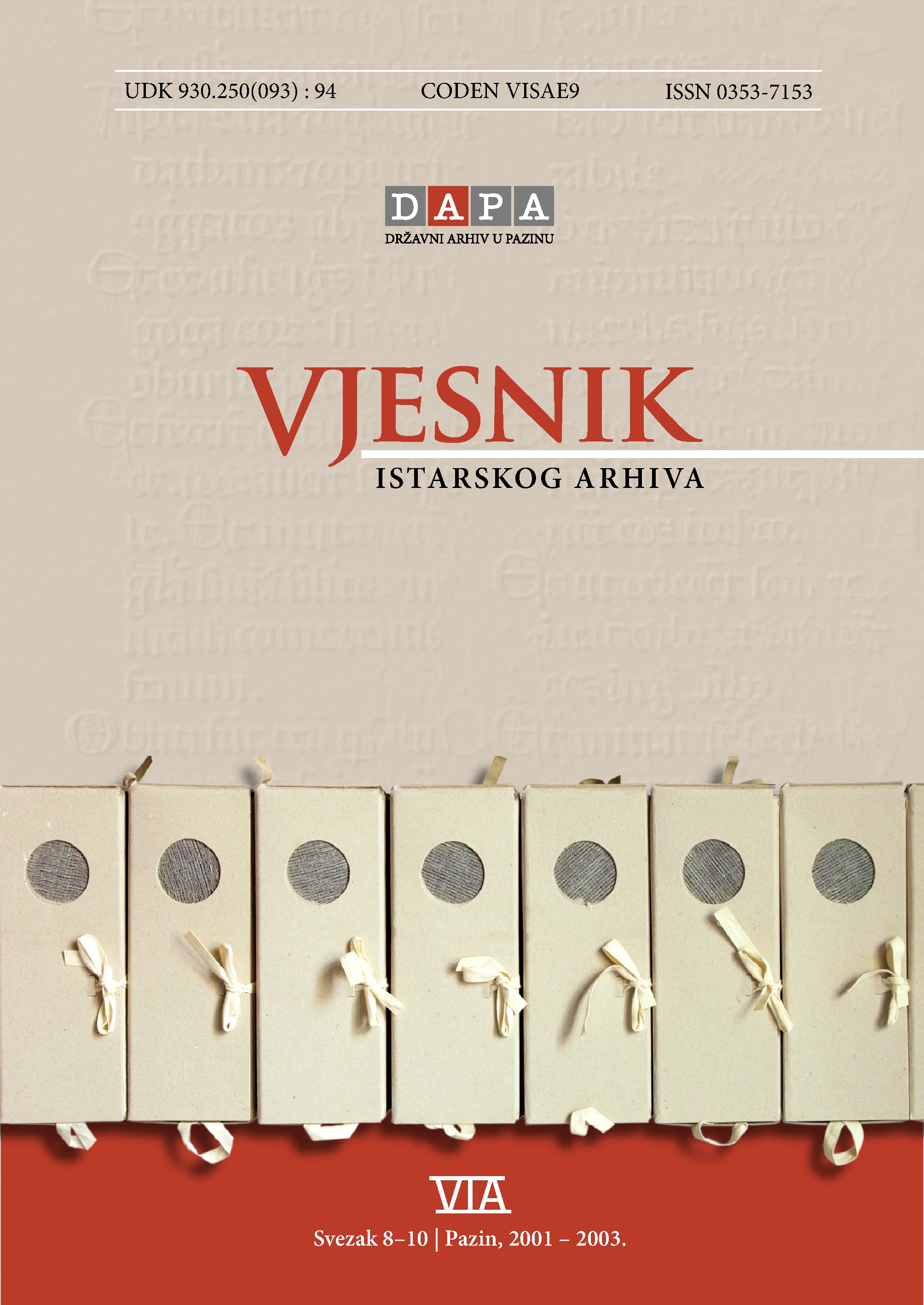The History of the Protection of Archival Materials in the Field of Activity of the State Archives in Pazin
Abstract
In this work the author deals with a short historical review of the protection of archival materials, which started to be made under various historical circumstances throughout Istria. The author’s intention is also to emphasize the specific position of Istria throughout the history, which has always been a little geographical area with great alternation of various rulers, who actually left written testimony of their existence in the area. Regardless of tumultuous historical events it has been proved that the consciousness of the importance and necessity of preserving the written word in Istria has been a great need since antiquity. Three historical periods have been mentioned, which significantly characterize different political, social, sociological, cultural, economic and other circumstances, within which documents and written testimony have been created – these are nowadays considered as the most significant part within the holdings of the State Archives in Pazin. In the first part of his work the author emphasizes the obligation of preserving archival materials, which was established by its very originators and was also regulated by the Statutes of Istrian towns (the Statutes of Poreč, Dvigrad, Pula and Sv. Lovreč are mentioned). Regardless of numerous negative circumstances such as numerous wars, plundering, devastation, epidemics and others, works of outstanding historical and cultural significance for Istria and Croatia derive from this period of time. In subsequent years, as the second period of time, there is a better and more organized method of keeping record of archival materials, which is evident by having made great efforts to bring together single types of archival materials and keep them in one place. Some examples of attempts to found centers by special organizations in the second half of the 19th century have been mentioned. These centers were meant to bring together and eventually preserve archival materials regardless of its originator. The third historical period regards the years after 1945 or after the end of the Second World War, when there was much talk about the necessity of founding the Istrian Archives, whose duty would be the bringing together and preserving of Istrian archival material. D. Vlahov presents a brief reminder of the period from 1945 until the founding of the today’s State Archives in Pazin, in 1958, as well as a reminder of the problems and consideration in the first ten years of the postwar years, after Istria united with Croatia. According to the author’s opinion the protection of archival materials in Istria in the full sense derives from the mere foundation of the Istrian Archives in 1958 by the National Liberation District of Pula. The then set tasks and plans have permanently remained as primary duty and responsibility of the Archives ever since. By speaking about the protection of archival materials special emphasis is given to the development of the today’s Archives in Pazin with regard to the art-conservation and restoration as protection methods, microfilm recording, as well as the publishing activities of the Archives. As a conclusion the author indicates some future tasks which are ahead of the Archives, ahead of its employees and he also offers various possibilities of approach to this topic from different perspectives in the near future.
Downloads
Published
Issue
Section
License

This work is licensed under a Creative Commons Attribution-NonCommercial 4.0 International License.

